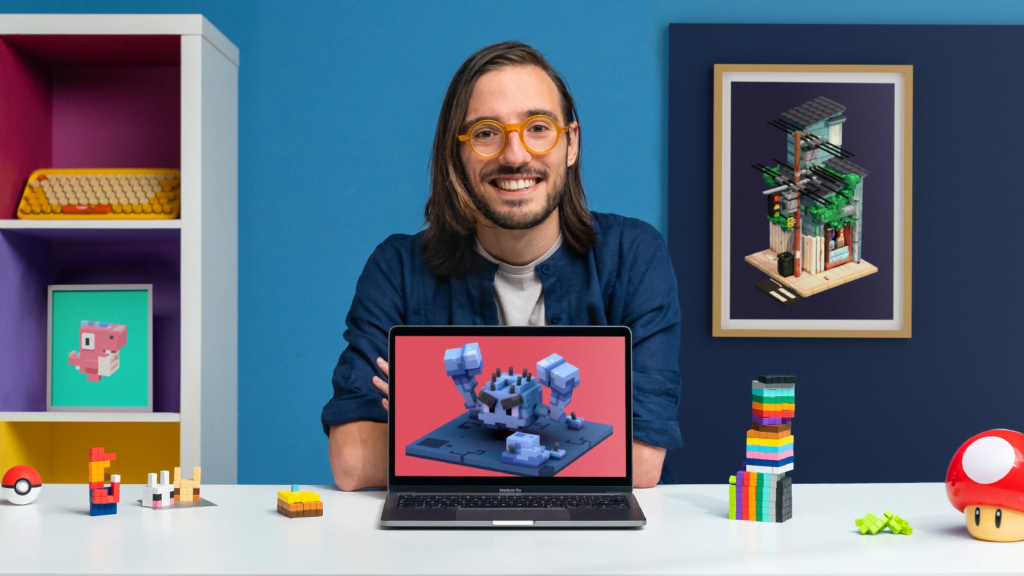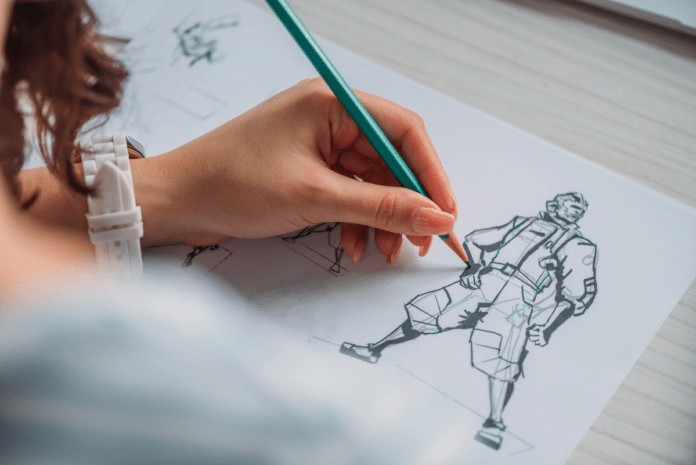Creating truly unique and memorable game art is a challenging process that requires a lot of creativity and hard work. In order to achieve this, you need to come up with fresh ideas and put in the time necessary to make your artwork stand out. Here are some tips that will help you create stunning game art that people will remember for years to come.
1. Idea and style for a character that is interesting and unique
Ideas for game characters can come from many sources of inspiration. In order to create an interesting and unique character, it is important to consider what traits will make them stand out from the crowd. One way to do this is to choose an unlikely occupation or hobby for your character, something that would be unexpected for them to excel at. For example, a shy librarian who is an amazing crossbow marksman or a former professional athlete who is now a skilled jewel thief. Another approach is to design a character who exists outside of the typical gender norms, such as a female bodyguard or a male nurse. By thinking outside the box, you can develop a game character that is both unique and interesting.
When creating characters for a computer game, it is also important to consider the style of the game. The art style will set the tone and atmosphere of the game and should be appropriate for the genre. For example, a realistic style may be more suitable for a simulation game, while a cartoon style may be more appropriate for an action-adventure game. There are many different styles to choose from, so it is important to spend some time considering what will work best for your game. Once you have selected a style, you can then start to create characters that fit that style. Remember to keep the game’s genre in mind when creating your characters, as this will help to ensure that they fit in with the overall game world.
Character design in video games has come a long way since the early days of pixels and polygons. Today, game artists have a wide range of art styles to choose from when creating characters. However, some art styles are more popular than others. One of the most popular art styles for character design is cel-shading. This technique involves using flat colours and sharp lines to give characters a cartoon-like appearance. Cel-shading is often used in games that are aimed at a younger audience, as it helps to create a more light-hearted and colourful aesthetic. Another popular art style is realistic graphics. This approach strives to create characters that look as lifelike as possible, often using photo-realistic texture maps and complex lighting effects. Realistic graphics are often used in games that aim for an immersive and believable world. These are just a few of the most popular art styles for character design. Ultimately, the best art style for any given game depends on the tone and setting of the game itself.
2. Do you need a backstory for your character?
When creating memorable and unique game art characters, many designers find it helpful to come up with a detailed backstory for their characters. This backstory can provide inspiration for the character’s design, as well as help to inform their in-game behaviour. There are a few key elements that should be included in any character’s backstory. First, consider their motivation – what drives them to act the way they do? What are their goals and aspirations? Second, think about their personality – are they brave or cowardly? Noble or selfish? Friendly or gruff? Lastly, consider their history – what events in their past have shaped who they are today? By taking the time to flesh out these details, you can ensure that your character feels fully realized and three-dimensional.
3. Design your character’s appearance
Appearance is yet another one of the most important aspects of character design. Not only do you want your character to be visually appealing, but their look should also be unique and memorable. So, what are the steps for designing a game character‘s appearance? First, the general style of your game will dictate the overall look of your characters. Next, remember that the kind of personality you want your character to have will help you to choose the right colours, features, and clothes for your character. Once you have a general idea of what you want, you can start to get creative and experiment with different looks until you find something that works.
4. Draw your character in different poses and settings
When creating game art, it is important to design characters that can be used in a variety of poses and settings. This flexibility allows the game developers to create different scenes and gameplay experiences without having to create new art assets. For example, a character that can be drawn in both standing and sitting positions can be used in a wide range of scenarios, from dialogues to combat. Additionally, designing characters that can be placed in different environments helps to create a sense of immersion for the player. By ensuring that the artwork is versatile, game developers can create richer and more entertaining games.
5. What to do if you are stuck with design?
If you’re feeling stuck and uninspired, that’s where concept 2D art design service comes in – they can help you breathe new life into your artwork, and come up with unique, engaging designs that will capture your audience’s attention. They often have a team of experienced artists who will work closely with you to understand your vision, and then bring your concepts to life. They’ll help you explore different ideas and perspectives, and push the boundaries of what’s possible to create truly original concept art. So if you’re feeling stuck, don’t despair – concept 2D art design service can help you get your creativity flowing again.

Final Thoughts
Creating unique and memorable game art characters can be a daunting task, but if you follow these tips you’ll be well on your way to creating characters that players will love. Start by considering the tone and setting of your game, then come up with a backstory for your character that will help to inform their design. Next, choose colours and features that reflect the personality you want them to have. Finally, make sure that your character is designed in a way that allows them to be posed in different settings and environments. If you find yourself stuck creatively, don’t despair – concept 2D art design services can help you get your ideas flowing again.





